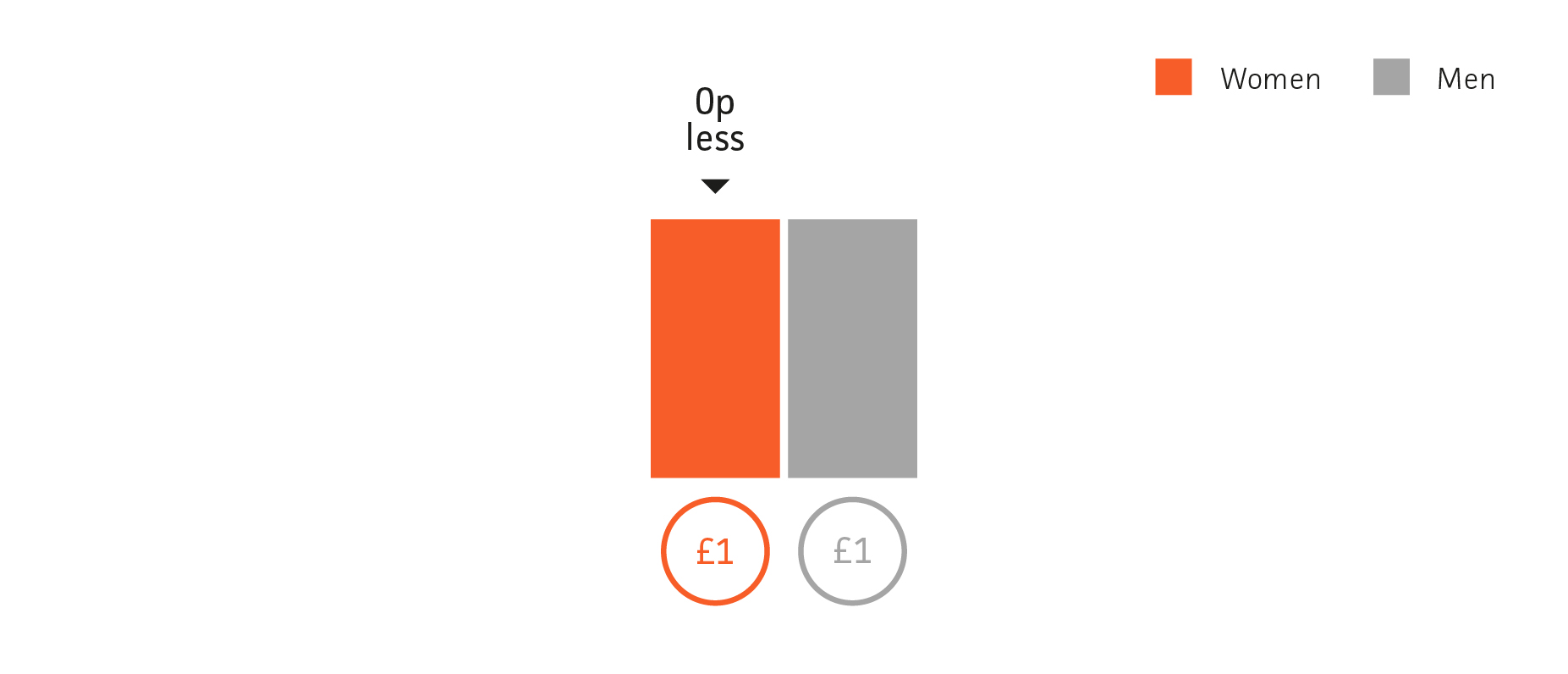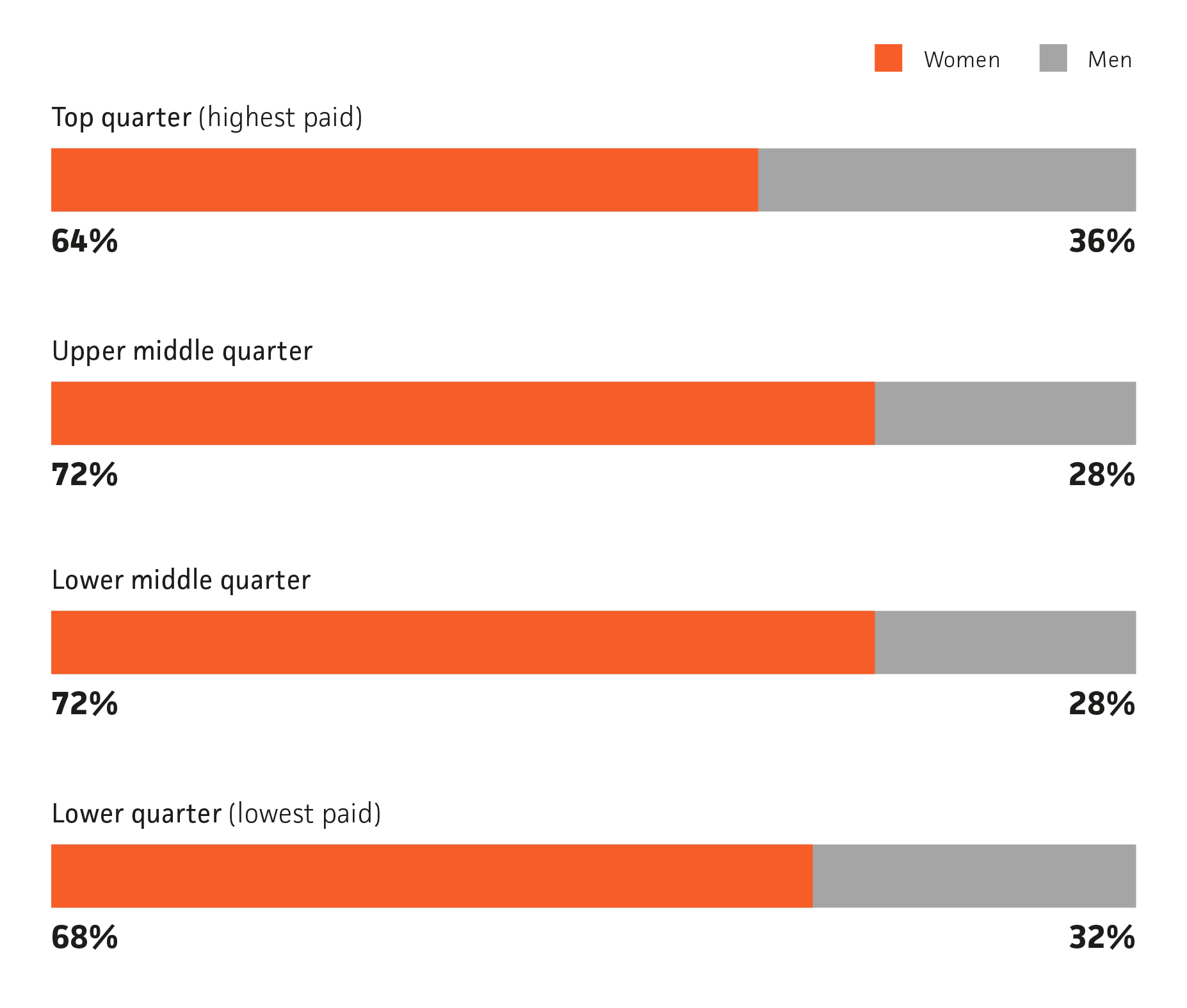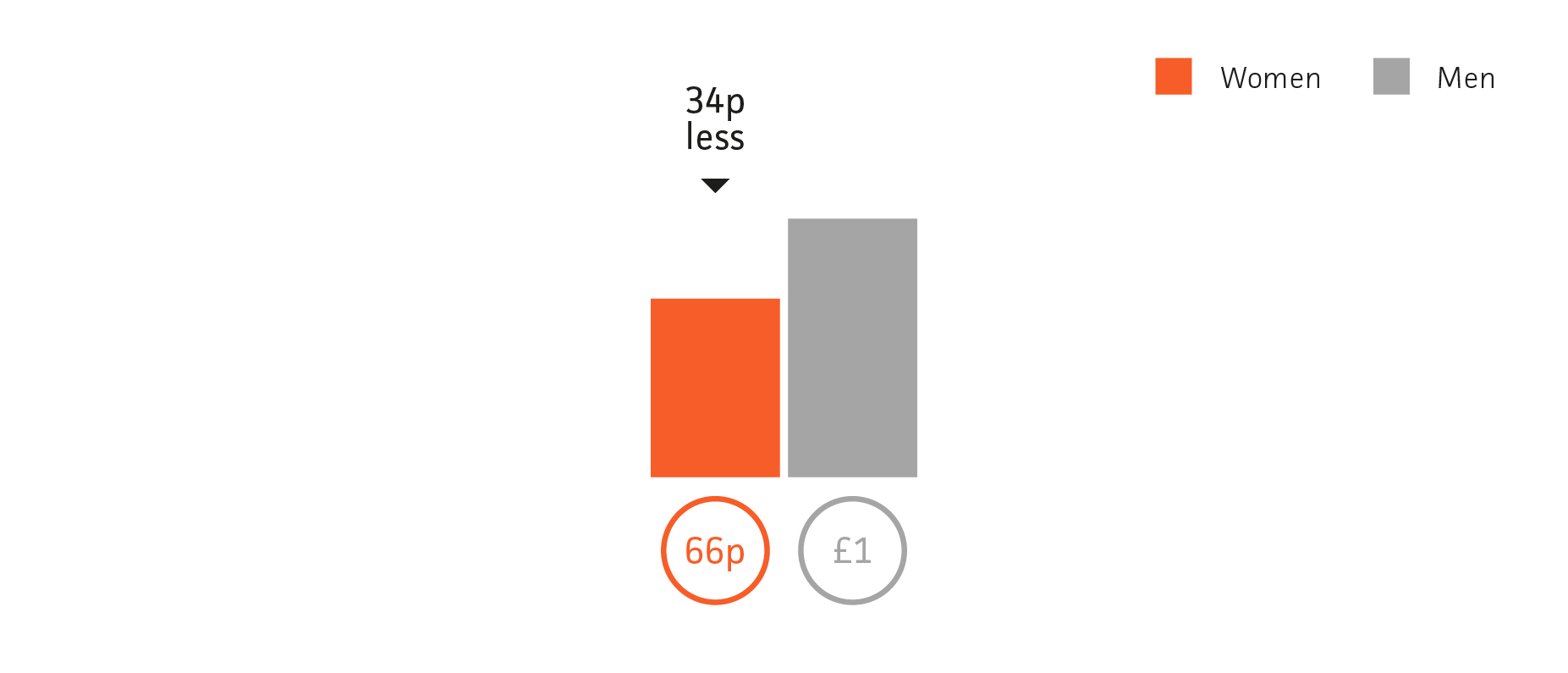Hourly wages pay gap
In this organisation, women earn £1 for every £1 that men earn when comparing median hourly wages. Their median hourly wage is 0% lower than men’s.

When comparing mean hourly wages, women’s mean hourly wage is 7.7% lower than men’s.
About mean and median
The mean hourly rate is the average hourly wage across the entire organisation so the mean gender pay gap is a measure of the difference between women’s mean hourly wage and men’s mean hourly wage.
The median hourly rate is calculated by ranking all employees from the highest paid to the lowest paid, and taking the hourly wage of the person in the middle; so the median gender pay gap is the difference between women’s median hourly wage (the middle paid woman) and men’s median hourly wage (the middle paid man).
Proportion of women in each pay quarter
In this organisation, women occupy 64% of the highest paid jobs and 68% of the lowest paid jobs.

About pay quarters
Pay quarters are calculated by splitting all employees in an organisation into four even groups according to their level of pay. Looking at the proportion of women in each quarter gives an indication of women's representation at different levels of the organisation.
Bonus pay gap
In this organisation, women earn 66p for every £1 that men earn when comparing median bonus pay. Their median bonus pay is 34.5% lower than men’s.

When comparing mean bonus pay, women’s mean bonus pay is 40.5% lower than men’s.
Who received bonus pay
56.7%
of women.
61.3%
of men.

